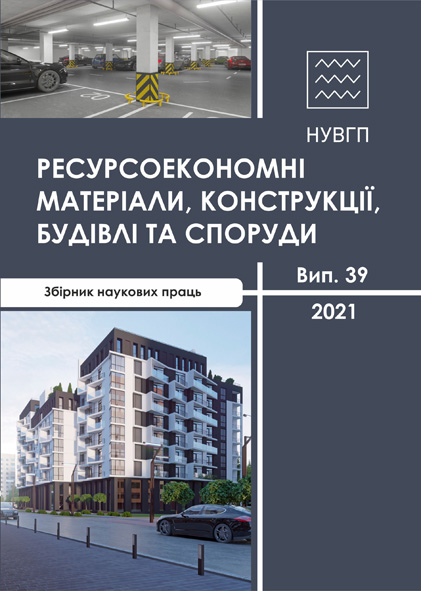BEARING CAPACITY AND DEFORMATIVITY OF SPAN ELEMENTS MADE OF CELLULAR CONCRETE CONTAININGBUTT-END STOPS AND REINFORCED BY UNCONVENTIONAL REINFORCEMENT
DOI:
https://doi.org/10.31713/budres.v0i39.016Abstract
The article discusses the results of experimental research and an analysis of the work under a load of bending beam samples of foam concrete, reinforced with flexible reinforcement of organic origin with butt-end stops and without them. One has provided recommendations for the use of butt-end stops in such span structures.
Today we can characterize the construction industry by the use of materials that allow combating heat loss to the environment effectively. This rule is actively applied in all types of construction - not only in residential construction but also in the construction of industrial buildings and structures. Cellular concrete occupies a significant niche among the materials used for the installation of enclosing structures. Foam and aerated concrete have become the most popular among cellular concrete. One should emphasize such main disadvantages of aerated concrete as their fragility and not too high mechanical strength, which limits the use of this material. The low mechanical strength of cellular concrete requires the installation of a reinforcing core in the structural elements of cellular concrete, which would absorb external forces. On the other hand, due to the low mechanical strength of such concrete, there is a problem of reliable anchorage of the working reinforcement in cellular concrete. One of the options for the anchorage of reinforcing bars in fragile, not very strong environments may be the installation at the ends of the rods at the end faces of butt-end stop structures.
Six experimental samples were made with butt-end stops of different types and without them to study the problem of the influence of butt-end stops on the bearing capacity of foam concrete beam samples. Nylon ropes were used as working longitudinal reinforcement. The butt-end stops were made of 10 mm thick waterproof plywood and 75×50×5 mm metal angle trim. Plywood butt-end stops were made flat and tridimensional of half and full height of the cross section of the experimental foam concrete beam sample.
One performed testing of research samples on bending after 28 days from the start of concreting. The research of foam concrete beam samples was performed on the experimental stand in the laboratory of building materials of Lviv National Agrarian University. The samples were loaded with two concentrated forces applied at a distance of 300 mm from the support of the test sample on its upper face.
The analysis of experimental data showed that the presence of butt-end stops in foam concrete beams with unconventional flexible reinforcement causes an increase in the bearing capacity of foam concrete beams. The increase in the bearing capacity of the beams is only up to a certain limit of the height of the butt-end stops, which is approximately equal to half the height of the beam. Further increase in the height of the butt-end stop does not cause the expected increase in bearing capacity and decrease in deflections.
Therefore, the installation of butt-end stops in foam concrete elements with unconventional reinforcement reduces the deflections of the latter under load and increases their bearing capacity.

